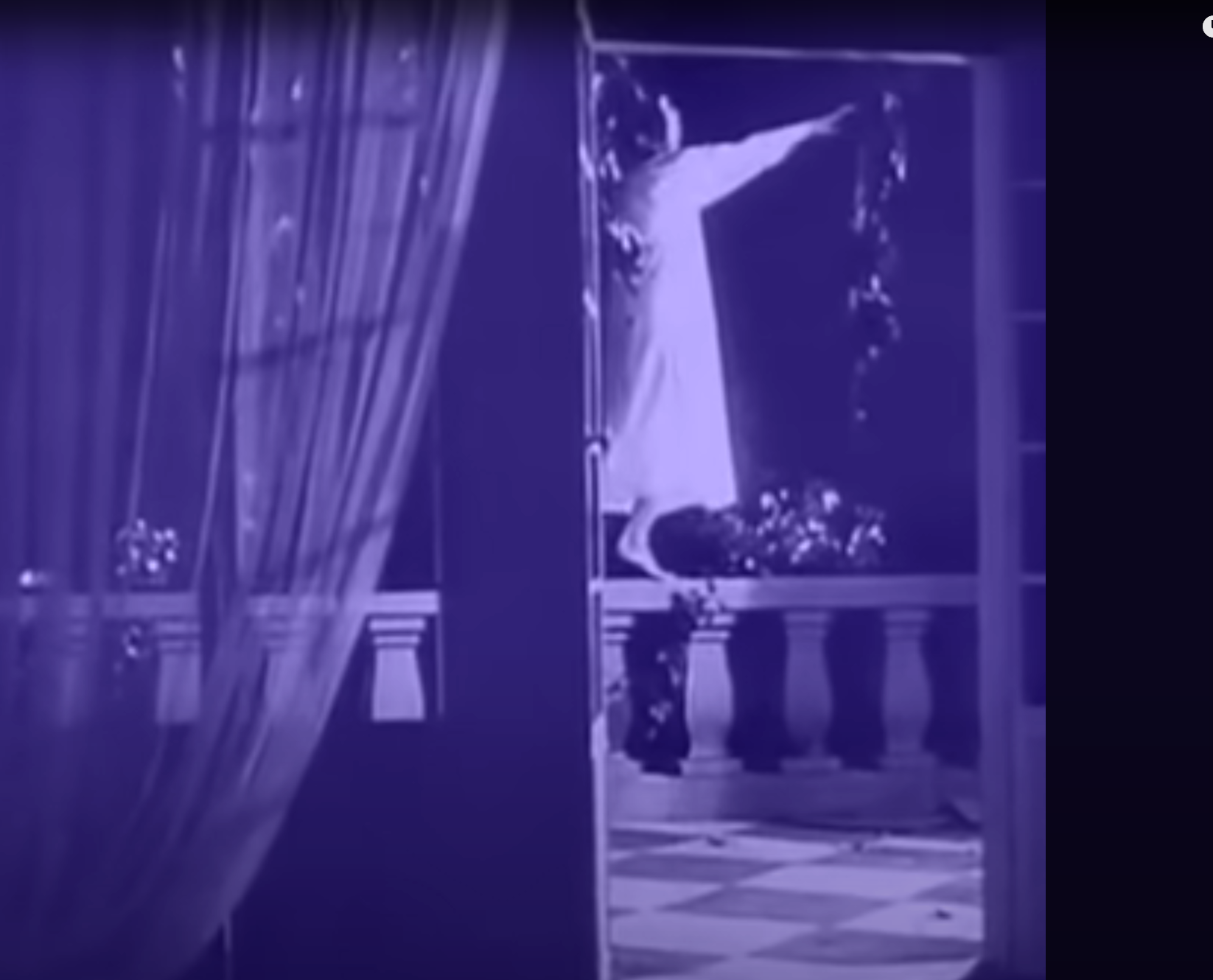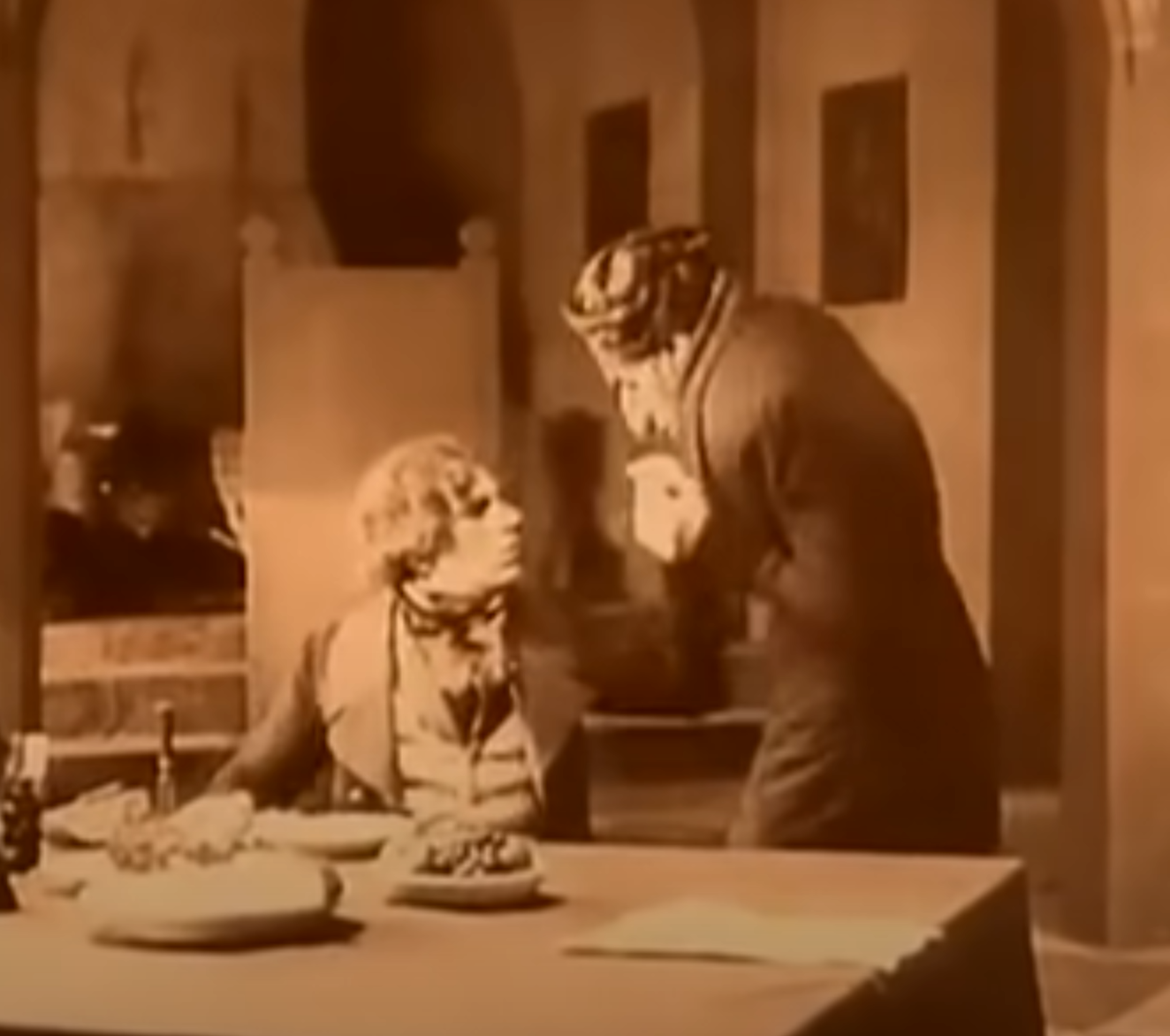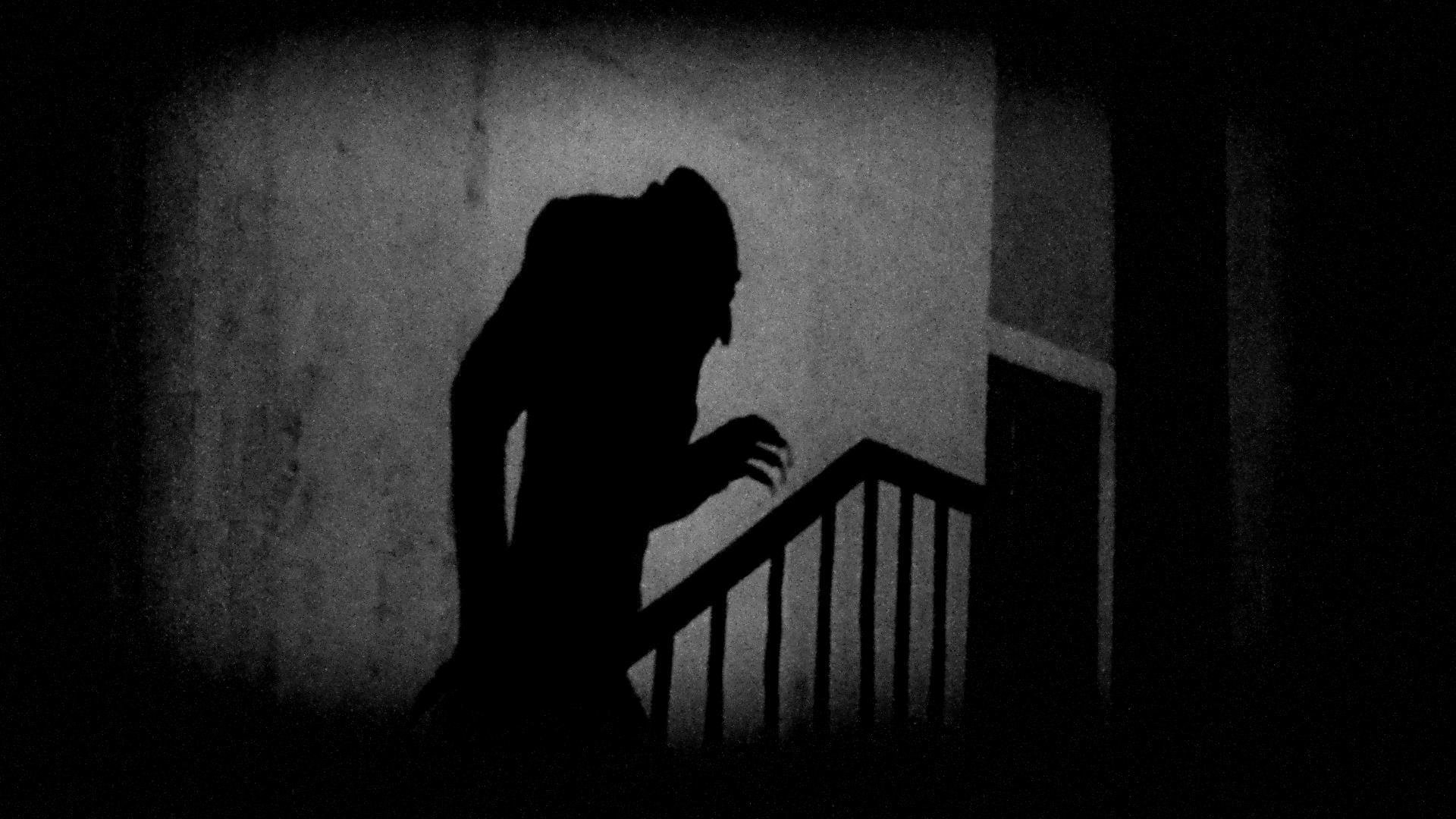Analyzing Nosferatu
F. W. Murnau's expressionist masterpiece Nosferatu is many things and works on many levels. Like other Expressionist works, it's relationship to German culture of the inter war period is close...but exactly what it says... Well, there are lots of different ways of looking at it.
First, Nosferatu is probably the first real vampire film. It actually establishes some aspects of that genre. For example, the idea that vampires cannot survive sunlight is an innovation from Nosferatu not Dracula and it's been picked up in everything from more recent vampire films to What We Do in the Shadows. Nosferatu's look, the creepy way he moves and particularly the was he rises from his coffin have found their way into popular culture. Nosferatu is not scary to a modern audience. However, it is still pretty unsettling.
Of course Murnau and the other members of Prana Film certainly knew that they were making a fictional story. However, they were also deeply interested in the occult and 1920s was a high point of belief in mystical powers of all sorts. This was driven substantially by the enormous losses of World War I and the Flu Pandemic of 1918 (and after). People were desperate to believe they could contact sons lost in war or family members taken by the flu. Prominent individuals such as Arthur Conan Doyle, author of the Sherlock Holmes books, Oliver Lodge (a well known physicist), G. I Gurdjeff, Charles Webster Leadbeater, were ardent believers in the occult. Ouija boards were all the rage. So, a movie about occult phenomena had a built in audience.
 Sex is another critical aspect of both the era and the film. The late Victorian and the Edwardian eras had been characterized by relatively extreme repression of sexuality. The post-war years, particularly in Germany were characterized by sexual liberation. In 1923, the year after this film, hyperinflation and an end-of-the-world sense hit German society and nakedness, orgies, and sexual experimentation of all kinds became relatively common. This film, though the characters themselves are chaste, is full of barely repressed sexual tension. Of course the key sexualized character is Ellen, Hutter's vulnerable wife, who is pure and true and who is taken over by Orlock. The scenes of her walking on the patio railing, arms outstretched are a vision of sexual innocence and compulsion. Ultimately, of course, the town is saved by Ellen's sexuality.
Sex is another critical aspect of both the era and the film. The late Victorian and the Edwardian eras had been characterized by relatively extreme repression of sexuality. The post-war years, particularly in Germany were characterized by sexual liberation. In 1923, the year after this film, hyperinflation and an end-of-the-world sense hit German society and nakedness, orgies, and sexual experimentation of all kinds became relatively common. This film, though the characters themselves are chaste, is full of barely repressed sexual tension. Of course the key sexualized character is Ellen, Hutter's vulnerable wife, who is pure and true and who is taken over by Orlock. The scenes of her walking on the patio railing, arms outstretched are a vision of sexual innocence and compulsion. Ultimately, of course, the town is saved by Ellen's sexuality.
 But the scenes with Ellen are not the only sex in the movie. Probably the most provocative scenes take place between Nosferatu and Hutter. The interchange between the two crackles with weirdness, fear, and sexual desire. It seems unlikely that "the precious blood" is the only thing Nosferatu wants from Hutter. Murnau was gay and this part of the movie has a strong undercurrent of homosexual desire. Berlin in the post war period had a flourishing gay culture with on the order of 170 gay clubs and bars. The historian Robert Beachy argues that modern LGBTQ+ identity really originated in Berlin in this era. So, at least some audiences would have certainly picked up on the sexual energy of these scenes.
But the scenes with Ellen are not the only sex in the movie. Probably the most provocative scenes take place between Nosferatu and Hutter. The interchange between the two crackles with weirdness, fear, and sexual desire. It seems unlikely that "the precious blood" is the only thing Nosferatu wants from Hutter. Murnau was gay and this part of the movie has a strong undercurrent of homosexual desire. Berlin in the post war period had a flourishing gay culture with on the order of 170 gay clubs and bars. The historian Robert Beachy argues that modern LGBTQ+ identity really originated in Berlin in this era. So, at least some audiences would have certainly picked up on the sexual energy of these scenes.
And, of course, like so many of the films made in Germany in this era, issues of war and power form a strong element of the film. Nosferatu is pure evil, pure death. He holds most of those who come near him in his grip and compels them to do his bidding, just like soldiers being commanded to attack from trenches into machine gun fire. There are important visual clues that link the film with war and with the trenches. A beach appears to be crossed with barbed wire, horse drawn carts are reminicent of military caissons (carts or carrying ammunition). But, perhaps the biggest visual cue is Nostradamus' house. Knock proposes that Nostradamus buy the house across from Hutter's. But, of course, it isn't a house at all. As the previous page notes, the filming location is the Salzpeicher warehouses in Lubeck but the look is of a bombed out factory of some kind. Remember that Murnau could have found an abandoned mansion to film, but consciously, or perhaps unconsciously, he chooses to make a home for Nosferatu in what might look like a bombed out war material factory. So, key themes underlying the action is the willingness of people to fall under the sway of power and of death, to do death and power's bidding. Murnau wants people to recognize the evil behind conformity and the relationship between power and death. These are themes that are echoed repeatedly in his films and in other films of this era. Many critics have seen these films as a warning to Germans about the seductiveness of military power, hatred, and violence.
 One last thing to focus on in this film. While American made films tended to be action filled, this film has relatively little action and a lot of psychological focus. Intense emotions, fear, love, loathing, despair, all take their place here. The emotional state of the characters is portrayed through expressions and closeups but also through intense use of light and shadow. Grainy dark images full of obscured areas feature heavily. The shadow of Nosferatu as he mounts the stairs is one of the most memorable frames. These film making techniques and foci were to have a huge future. Hollywood studios saw productions like Nosferatu and began hiring their directors to give American films the look and intensity of these German films. Murnau himself was hired by Fox in 1926. The majority of the Wiemar directors and actors were left-leaning and many were Jewish. When the Nazis came to power in 1933, many of them fled to the United States where some of them went on to make some of the greatest films of the 20th century. Among those who fled: Fritz Lang, Billy Wilder, Douglas Sirk, Kurt Bernhart, Henrik Galeen, and many others. Billy Wilder, perhaps the most successful of them said: "The optimists died in the gas chambers; the pessimists have pools in Beverly Hills." The looks and psychological aspects of Wiemar film became the looks and psychological aspects of American film, particularly Film Noir.
One last thing to focus on in this film. While American made films tended to be action filled, this film has relatively little action and a lot of psychological focus. Intense emotions, fear, love, loathing, despair, all take their place here. The emotional state of the characters is portrayed through expressions and closeups but also through intense use of light and shadow. Grainy dark images full of obscured areas feature heavily. The shadow of Nosferatu as he mounts the stairs is one of the most memorable frames. These film making techniques and foci were to have a huge future. Hollywood studios saw productions like Nosferatu and began hiring their directors to give American films the look and intensity of these German films. Murnau himself was hired by Fox in 1926. The majority of the Wiemar directors and actors were left-leaning and many were Jewish. When the Nazis came to power in 1933, many of them fled to the United States where some of them went on to make some of the greatest films of the 20th century. Among those who fled: Fritz Lang, Billy Wilder, Douglas Sirk, Kurt Bernhart, Henrik Galeen, and many others. Billy Wilder, perhaps the most successful of them said: "The optimists died in the gas chambers; the pessimists have pools in Beverly Hills." The looks and psychological aspects of Wiemar film became the looks and psychological aspects of American film, particularly Film Noir.
Next up: Charlie Chaplin and City Lights